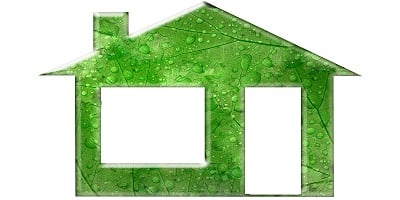To meet the demands of an environmentally conscious market, the construction industry is adopting practices that minimize the environmental impact of construction, building operation, and demolition. To stay ahead of your competitors, it is essential to follow green construction trends so you can understand the direction of the market.
What is Green Building?
Green building can be broadly defined as integrating building practices that reduce the environmental footprint of a building, especially when compared to buildings constructed with standard building practices. Green building is regarded as a more comprehensive or holistic approach to construction as it considers how the building’s construction, daily use, and eventual demolition all contribute to its overall environmental impact.
Green Building Trends
- Carbon Neutral Buildings: When greenhouse gas emissions are minimized during construction and building use, and when they are balanced by climate positive initiatives, a building is considered “carbon neutral.” The goal of these buildings is to cut down on energy consumption, water consumption, and solid waste that ends up in landfills. Climate positive initiatives can include installing wind turbines and solar panels to save energy; implementing water saving and recycling methods such as harvesting rainwater for onsite use or even treating wastewater onsite before it is returned to its original source; and installing more efficient HVAC systems.
- Alternative building materials: The construction industry consumes more raw material than almost any other industry, and much of it is non-renewable. However, advancements in construction technology allow builders to choose from a wider variety of raw materials than ever before. For example, bamboo can be turned into lumber, flooring, and even tile. Similarly, mass timber, composed of multiple solid wood panels that are nailed or glued together, can be used as an alternative to steel and concrete. Green building does not mean you have to overhaul your entire approach to construction, but substituting alternative building materials, such as wooden nails over aluminum nails, helps to minimize the environmental impact of construction.
- Climate Resiliency: As more people become concerned about the effects of climate change, your clients will want to know how your construction will stand up to extreme weather and natural disasters. Builders must be concerned about more than just rising tides and earthquakes. Practices like including solar panels, upgrading HVAC systems to prevent overheating, expanding water storage, and including off-grid power are all ways to ensure a building remains habitable even in extreme weather.
- Distributed Energy Systems: Distributed Energy Systems, also referred to as Distributed Generation, comprise a variety of technology that generate and monitor energy near or at the place the energy is being used. Developers can now implement systems into new construction that controls, generates, and stores energy solutions. These systems allow one to oversee the energy performance of a building which can be used to make changes to energy consumption or production, thus reducing operational costs, improving energy reliability, and reducing the carbon footprint of a building.
- Certified Green: The LEED Certification is the most widely used certification system in the world, evaluating buildings on their design, construction operation and maintenance. To earn a LEED certification, a building must use resources more efficiently when compared to conventional structures. Earning a LEED Certification not only means a project is designed to be sustainable, but it also demonstrates that you and your company are able to design and construct a sustainable project, earning you good will in the construction industry and with future clients.
Green Building with BECK
The BECK Group is committed to advancing green building practices to move the construction industry toward a more sustainable future. Our patented LignoLoc® wooden nails are ideal for projects designed with sustainable materials in mind. Made from beech wood and compressed resin, LignoLoc® wooden nails provide a tensile strength that rivals aluminum nails and can be used in a variety of indoor and outdoor applications. Additionally, they eliminate the need for additional pre-drilling during construction, which will save you time during the building process allowing you to accept more jobs to expand your construction portfolio. Consider LignoLoc® wooden nails—the first collated nail made of wood—which is used with the FASCO® (a member of the BECK Group) LignoLoc® Pneumatic Nailer.
.svg.png)


